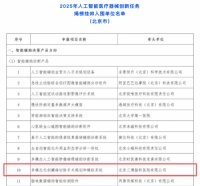Time trends in healthy lifestyle among adults in Germany: Results from three national health interview and examination surveys between 1990 and 2011.,PLOS ONE
BACKGROUND The combined impact of multiple healthy behaviors on health exceeds that of single behaviors. This study aimed to estimate trends in the prevalence of a healthy lifestyle among adults in Germany. METHODS A data set of 18,058 adults aged 25-69 years from three population-based national health examination surveys 1990-92, 1997-99 and 2008-11 with complete information for five healthy behavior factors was used. A 'daily intake of both fruits and vegetables, 'sufficient physical exercise', 'no current smoking' and 'no current risk drinking' were assessed with self-reports and 'normal body weight' was calculated based on measured body weight and height. A dichotomous 'healthy lifestyle' indicator was defined as meeting at least four out of five healthy behaviors. Age-standardized prevalence was calculated stratified by sex, age groups (25-34, 35-44, 45-54 and 55-69 years) and education level (low, medium and high). Trends were expressed in relative change (RC) between 1990-92 and 2008-11. RESULTS In Germany, the overall prevalence of healthy lifestyle increased from 9.3% in 1990-92 to 13.5% in 1997-99 and to 14.7% in 2008-11 (RC: +58.1%). The prevalence increased among men and women and in all age groups, with the exception of men aged 45-54 years. The RC of increasing healthy lifestyle prevalence between 1990-92 and 2008-11 was stronger albeit on a higher level among women compared to men. Therefore, the gender difference in healthy lifestyle has increased, but age-related differences have overall decreased in this period. Among high educated men the prevalence of a healthy lifestyle increased between 1990-92 and 2008-11 from 10.6% to 16.3% (p = 0.01) and among high educated women from 16.4% to 30.3% and also among medium educated women (10.9 to 16.6, p<0.01), but no significant increase in healthy lifestyle prevalence was observed among men with low and medium education and among women with low education level. CONCLUSIONS The prevalence of a lifestyle with at least four out of five healthy behaviors markedly increased from 1990-92 to 2008-11. Nevertheless, additional health promotion interventions are needed to improve the number of combined healthy behavior factors and the awareness in the population that each additional healthy behavior factor leads to a further improvement in health, especially in men in the age-range 45 to 54 years, and among persons with low education level.
中文翻译:
德国成年人健康生活方式的时间趋势:1990 年至 2011 年间三项全国健康访谈和检查调查的结果。
背景技术多种健康行为对健康的综合影响超过单一行为。本研究旨在估计德国成年人健康生活方式的流行趋势。方法 使用1990-92年、1997-99年和2008-11年三项基于人口的全国健康检查调查的18,058名25-69岁成年人的数据集,其中包含五种健康行为因素的完整信息。通过自我报告评估“每日摄入水果和蔬菜”、“足够的体育锻炼”、“目前不吸烟”和“目前没有危险饮酒”,并根据测量的体重和身高计算“正常体重”。二分法“健康生活方式”指标被定义为至少满足五分之四的健康行为。按性别、年龄组(25-34、35-44、45-54 和 55-69 岁)和教育水平(低、中和高)分层计算年龄标准化患病率。1990-92 年至 2008-11 年间的趋势以相对变化 (RC) 表示。结果 在德国,健康生活方式的总体流行率从 1990-92 年的 9.3% 上升到 1997-99 年的 13.5%,再到 2008-11 年的 14.7%(RC:+58.1%)。除 45-54 岁男性外,男性和女性以及所有年龄组的患病率均有所增加。1990-92 年和 2008-11 年间,健康生活方式流行率不断提高的 RC 更强,尽管与男性相比,女性的水平较高。因此,这一时期健康生活方式的性别差异有所增加,但与年龄相关的差异总体上有所减少。1990-92 年至 2008-11 年间,受过高等教育的男性中,健康生活方式的流行率从 10.6% 上升至 16.3%(p = 0.01),受过高等教育的女性中,这一比例从 16.4% 上升至 30.3%,受中等教育的女性中,健康生活方式的比例也从 10.9% 上升至 30.3%。 16.6,p<0.01),但在中低教育水平的男性和低教育水平的女性中,健康生活方式的流行率没有显着增加。结论 从 1990-92 年到 2008-11 年,五项健康行为中至少有四项的生活方式的流行率显着增加。然而,需要额外的健康促进干预措施来提高综合健康行为因素的数量,并提高人们对每一个额外的健康行为因素都会导致健康状况进一步改善的认识,特别是在 45 至 54 岁的男性中,以及教育水平低的人。
相关知识
Disparities in Preventive Oral Health Care and Periodontal Health Among Adults With Diabetes
Healthy lifestyle behaviours and all
Health related quality of life in paediatric chronic health conditions: A comparative study among children and adolescents in Jordan
The impact of comprehensive healthy lifestyles on obstructive sleep apnea and the mediating role of BMI: insights from NHANES 2005
the Korea National Health and Nutrition Examination Survey (KNHANES) 2007
Correlation between Health and eHealth Literacy and a Healthy Lifestyle: A Cross
Chronic Diseases, Health Status and Health Service Utilization among Koreans
Association between the Healthy Lifestyle Index and risk of multimorbidity in the Women’s Health Initiative,The Journals of Gerontology Series A: Biological Sciences and Medical Sciences
Achieving Optimal Health: Wellness and Nutrition
Association between healthy lifestyle factors and health
网址: Time trends in healthy lifestyle among adults in Germany: Results from three national health interview and examination surveys between 1990 and 2011.,PLOS ONE https://m.trfsz.com/newsview1257373.html
